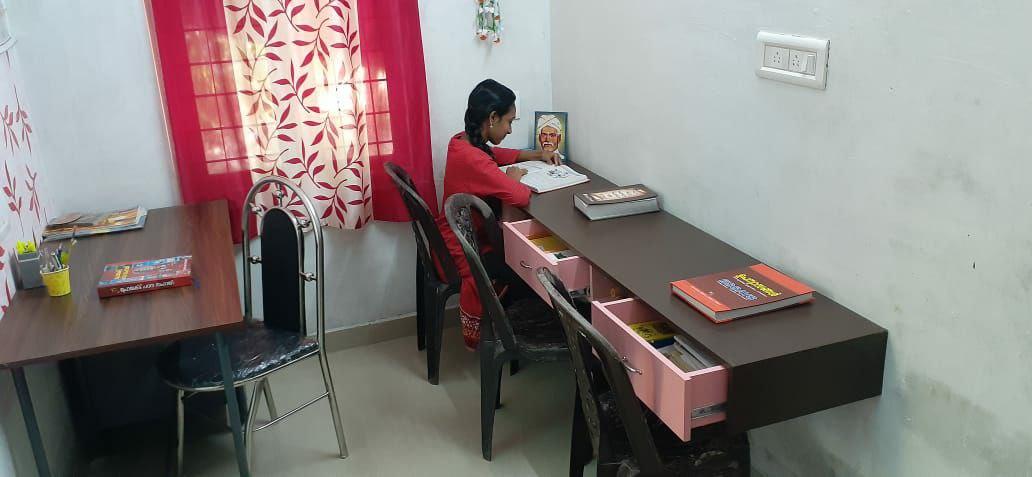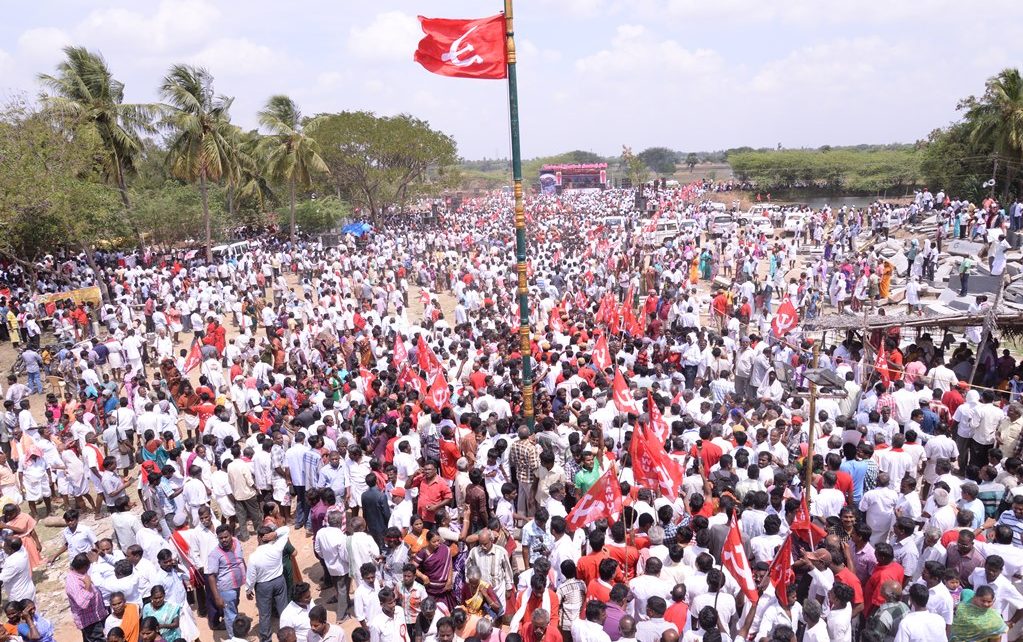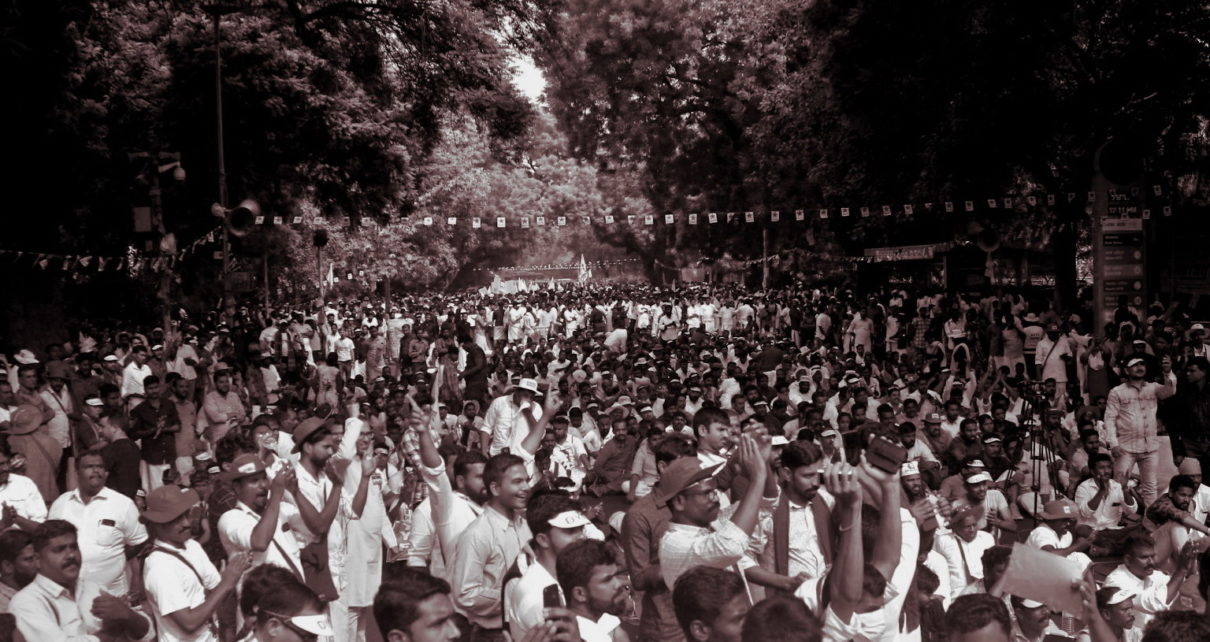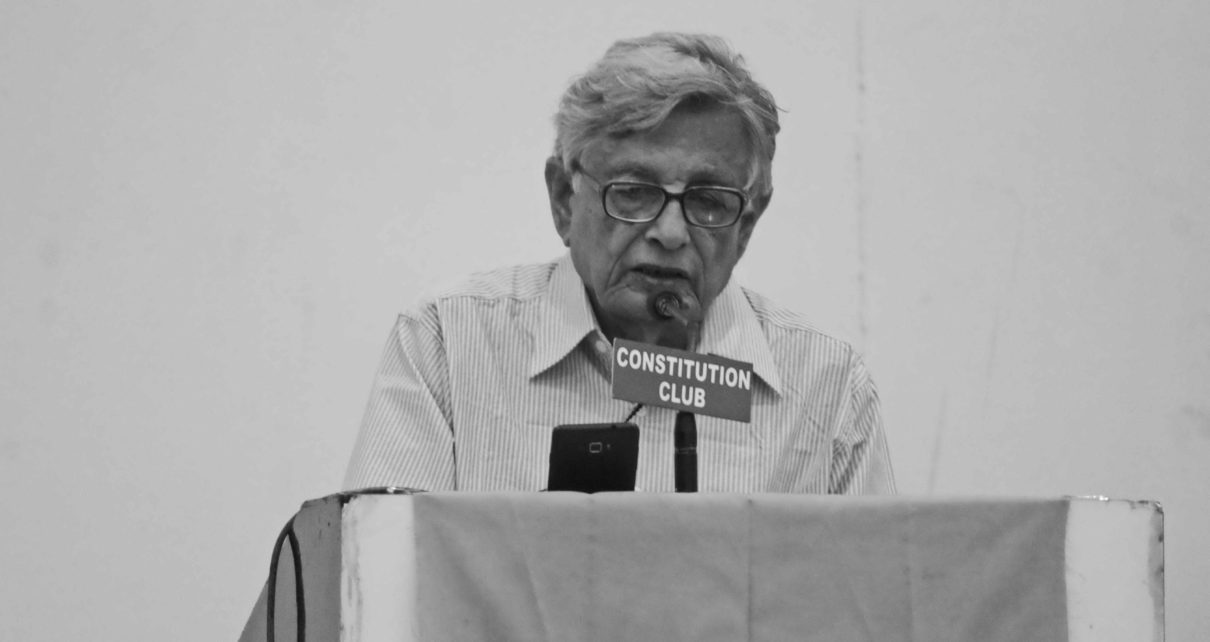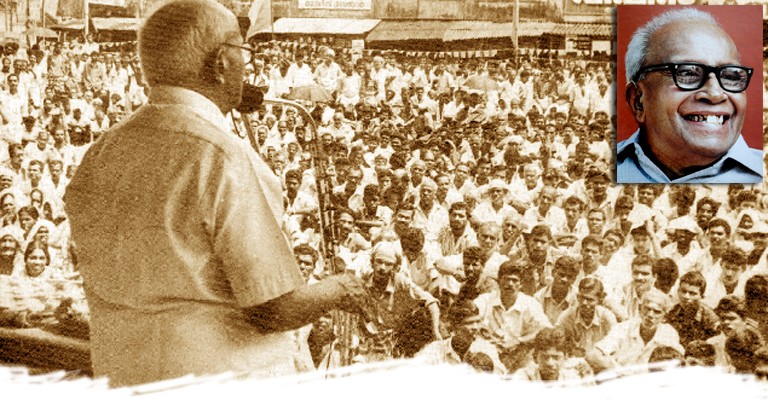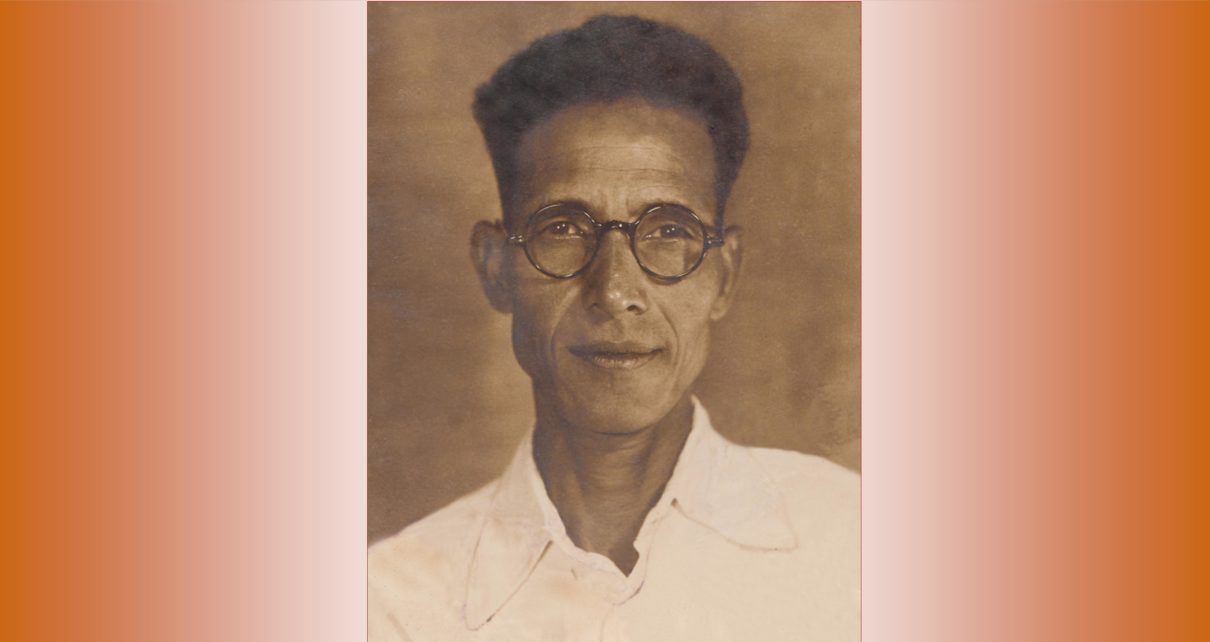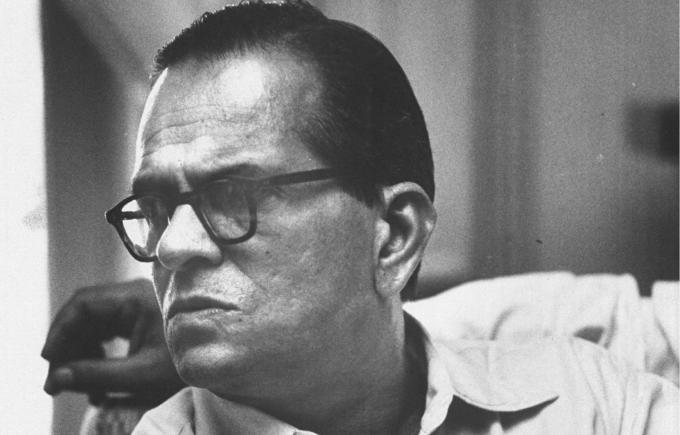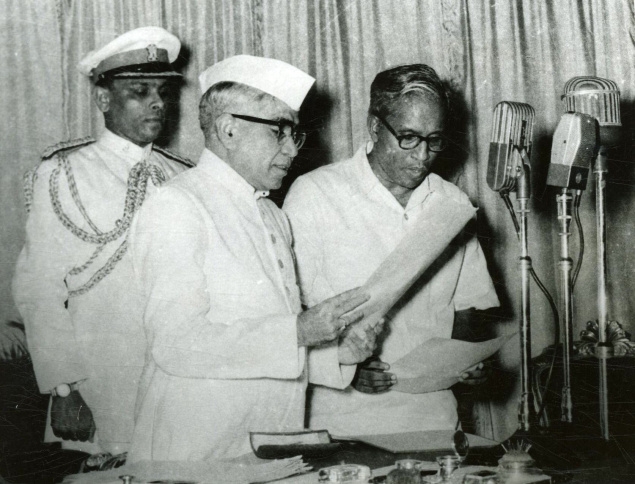The CPI(M)-led Left Democratic Front (LDF) government of Kerala has inaugurated 12,250 study rooms constructed using government funds at the houses of Scheduled Caste students who did not have adequate facilities to study at home. Along with these, another 250 community study rooms for Scheduled Tribe students were also opened on Saturday, 20 September 2020 at an online ceremony. The ceremony was presided over by AK Balan, Minister for SC/ST Development, and the study rooms were inaugurated by Chief Minister Pinarayi Vijayan. [Read more]
Tag: Caste and Class
The Tempered Steel of Keezhvenmani
25 December 2019 marks the 51st anniversary of the Keezhvenmani massacre, where 44 Dalit agricultural workers were killed by feudal landlords in Keezhvenmani village of Tamil Nadu. Anticaste.in republishes an article by Vijoo Krishnan, Joint Secretary of the All India Kisan Sabha (AIKS), who wrote the piece after visiting Keezhvenmani in 2017. [Read more]
Ten Per Cent Reservation: Who Will Benefit?
Prakash Karat, Polit Bureau Member of the Communist Party of India (Marxist), writes on the Constitutional amendment that the Narendra Modi-led BJP government got adopted in Parliament providing for 10 percent reservation for economically weaker sections in the general category. [Read more]
Caste in Indian History
Anticaste.in republishes renowned Marxist historian Irfan Habib’s classic essay on the evolution of caste in India. [Read more]
The Marxist Definition: Class and Caste in ‘Creamy Layer’ Controversy
EMS Namboodiripad
The Marxist assessment of the communal problem has been that communal unity cannot be forged except on the basis of class unity bringing together various sections of the working people belonging to all the communities on the basis of a united militant struggle waged by the people against the oppressing classes. In other words, class unity of the working people against the oppressing and exploiting groups at the top was the real solution for the communal problem.
This is as true of the caste question as of the communal question. This may be illustrated by the way in which the Marxist movement in Kerala assessed and sought to solve the question of the demand raised by the backward castes for reservation in government service.
The Marxist movement in Kerala in its early days, extended full support to the demand of the backward castes for reservation in government jobs and in educational institutions. At the same time, it organized the working people (belonging to all castes and communities) on class basis.
It was the first Communist Government in the State which formulated and issued the rules according to which definite quotas were fixed for the backward Hindu castes as well as for Muslims and the Christian communities. [Read more]
Comrade R B More: A Red Star in a Blue Sky
Satyendra More, Subodh More
2017 marks the 90th anniversary of two historic struggles for social justice in India. These are the Chavdar Lake Satyagraha of March 1927 at Mahad, Maharashtra, in which thousands of Dalits for the first time drank water from the lake that had been for centuries set aside only for caste Hindus, and the burning of the Manusmriti at Mahad in December 1927. The leader of these struggles was Dr B R Ambedkar, and it was with these two movements that Dr Ambedkar first emerged as one of the champions of the struggle for social justice in the country.
The main organiser of both these struggles was R B More, who was to become a widely respected communist leader. On 11 May 2017, the 45th death anniversary of Comrade R B More, Anticaste.in republishes an essay written in 2003 by his son Satyendra More and grandson Subodh More. The essay was originally written as two articles by the authors separately, and were combined and edited by Ashok Dhawale for People’s Democracy. [Read more]
Caste, Class and Property Relations
B T Ranadive
Nationalist tradition in India looked upon the struggle of the lower castes against the domination of the upper castes as a diversion from the general anti-imperialist struggle. The caste question was considered to be an internal affair of the Indians who, in spite of all the differences and inequalities among them, were expected to first fight for the freedom of the country, under the leadership of the bourgeoisie. At the same time, there was another current which held that India was unfit for freedom till the people first overcame the inequalities of the caste system. This current was represented by certain social reformers coming from upper castes whose bourgeois democratic consciousness was appalled by the monstrous iniquities of the caste system and other obscenities of Hinduism. In essence, both these traditions sought to delink the anti-caste struggles from the contemporary democratic and class struggles; they sought to circumscribe the anti-caste struggle within the framework of the existing political and economic system.
This essay by B T Ranadive makes a broad survey of both these traditions as well as certain other anti-caste currents which launched a direct attack on the inequality of the caste system. Ranadive argues that while anti-caste struggles, including those which take the form of a demand for reservation of jobs, etc, should be supported, what is called for is a deeper struggle, embracing the oppressed of all castes, against the present socio-economic system which is based on certain property and production relations which sustain both caste and class oppression. [Read more]
Castes, Classes and Parties in Modern Political Development
EMS Namboodiripad
5 April 2017 marked the 60th anniversary of the swearing in of the First Communist Ministry in Kerala, with Comrade EMS as the Chief Minister. Among the many far-reaching measures of the First Communist Ministry were the pioneering land reforms which abolished statutory landlordism and ‘jenmi’ system in the state, thus breaking the back of Brahminical landlordism and weakening “upper caste” Hindu landlordism as a whole. On the occasion of the Diamond Jubilee of the First Communist Ministry, Anticaste.in republishes Comrade EMS’s landmark article “Castes, Classes and Parties in Modern Political Development”, published first in the journal ‘Social Scientist’ in November 1977. [Read more]
Dalit Resistance and the Role of the Left
Brinda Karat
A fundamental and core feature of India’s socio-economic structures is its caste system. Birth and descent determine positions in immutable social hierarchies. When Rohith Vemula penned his tragic yet passionate suicide note he described his Dalit identity as a ‘fatal accident’. And it is true. Had he been born into another caste, he would not as a child has had to witness his mother Radhika facing caste based indignities. Nor would Rohith and his sibling Raja have faced discrimination in their school classrooms. The cancellation of his scholarship, his only means of survival as a student at a top University, would not have led to the drastic action he took, thus making him a victim of an institutional murder. The institution in question is not just the callous university establishment, but in fact, the institution of caste. [Read more]
B.V. Raghavulu on the Caste Question in India
B.V. Raghavulu, Vice-President of the Struggle Committee Against Caste Discrimination (Kulavivaksha Vyatireka Porata Sangham) and Polit Bureau member of the CPI(M), speaks to G. Mamatha on the caste question in India. [Read more]
